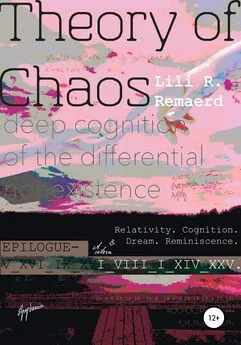Inna Borodina - Interdisciplinary theory of commercial communication. First part
- Название:Interdisciplinary theory of commercial communication. First part
- Автор:
- Жанр:
- Издательство:неизвестно
- Год:2022
- ISBN:978-5-532-95637-7
- Рейтинг:
- Избранное:Добавить в избранное
-
Отзывы:
-
Ваша оценка:
Inna Borodina - Interdisciplinary theory of commercial communication. First part краткое содержание
Interdisciplinary theory of commercial communication. First part - читать онлайн бесплатно ознакомительный отрывок
Интервал:
Закладка:
Communication, in modern economic conditions, acquires the properties of a strategic resource, the skillful use of which leads to an increase in the value of the company's market assets. In light of this, sellers who initiate communication face the problem of solving communication difficulties to attract buyers. The process of mass communication is investigated from the standpoint of increasing the density of the seller's information field by increasing the number of information channels, that is, we will analyze the structure and qualitative characteristics of the system in the presence of several channels of mass communication.
The behavior of individual buyers in the system is generalized and considered as a set of decisions of a behaviorally indivisible group (hereinafter potential consumers) with the following characteristics: the number of potential consumers; belonging to the consumer segment; the suggestibility of the group; frequency of group contact with communication channels. The reactions of potential consumers are localized to the level of analysis of the market behavior of a single individual, based on the fact that his reactions are characteristic of the behavior of each member of the set under consideration.
The characteristic of potential consumers is the demand in the time interval, which reflects the reaction of the target audience to the price offer and advertising information.
The publication of commercial information in the media through several information channels creates a synergistic effect, as a result of which the information impact is likely to increase.
The analysis of the developed cognitive and mathematical models of the influence of commercial communications on consumer demand is carried out. Analysis of the structure of the interaction of system elements shows that the density of the information field is characterized by a high degree of filling, this is reflected in the formal notation of the mathematical model of socio-economic relations in the form of a significant filling of systems of homogeneous differential equations (ODE). As already noted, when advertising is published in the media and on several information channels, an overlap of audiences of different information carriers occurs, that is, the information field of each channel (in the case of several communication channels) is compacted with a certain probability. The greater or lesser probability of the compaction of the information field of one of the channels at the expense of the other is determined by the real characteristics of the advertising channel (for example, TV programs are watched more often than they listen to radio, etc.). Proceeding from the principle of the most probable chain of events, taking into account the indicated restrictions on the probabilities of states of elements of the mass communications control system, it is possible to formulate equations describing the state of the system stable in time.
1. METHODOLOGY FOR MODELING COMMERCIAL COMMUNICATION AS AN INFORMATION FLOW
By commercial communication we mean any form of communication developed for direct or indirect promotion (for financial purposes) of goods, services or the image of a company, organization or individual carrying out commercial or industrial activities or working in a specific professional field.
Commercial communication is seen as a means of creating a benevolent attitude towards a product offer, as well as a tool to convince a potential audience of the need to purchase a specific product, only a specific company. The analysis of existing developments showed that the problem of the effect of communication in the formulation of the problem begins with the choice of the "quality" of interaction, then an economic parameter is determined, which will be influenced by the influence of information, the type of markets is set (monopoly, duopoly, oligopoly), and as a result, a method of modeling and acceptable mathematical apparatus.
Researchers consider the problem of the effectiveness of commercial information only within the framework of generally accepted approaches and methods. The most common are: models based on expert assessments and principles of probability theory; static models based on game theory; profit optimization models for price and advertising costs; dynamic models of firms strategies based on game theory; dynamic modeling of the behavior of individuals.
It should be noted that there is a completely traditional approach in information theory, when the second law of thermodynamics is used for social systems, which describes the direction of changes in the system. As noted by A. G. Wilson * 22: "There are close analogies between the concepts of physics and social physics … between value (utility) and energy". The author notes that "one of the advantages of physical analogies is that they can be useful in the analytical analysis of the system." *The Russian edition of the edition indicated in the bibliography differs from the original title of the work: "Entropy in urban and regional modeling." Wilson A.G. Pion Limited, London, 1970.
The quantity of information that can be transmitted is determined by the logarithm of the number of different write or transmit implementations. The channel through which this information is transmitted imposes certain requirements on the implementation of transmissions, so that not all implementations can be transmitted even in the absence of interference.
The parameters of the communication channel, which make it possible to single out the set of admissible implementations, are the characteristics of the information transmission channel without interference. Counting the number of admissible realizations in many cases turns out to be impossible, therefore, in practice, only a certain estimate of this value is used. Such an estimate can be considered, for example, the maximum value of the entropy calculated for all admissible distributions22.
Definition 1.1.The initial set of signs of states of the elements of the communication system will be called origin, and the final set of states as channel, intermediate states – current.
Definition 1.2.The maximum value of the entropy calculated for all admissible probability distributions is called the bandwidth of the channel without interference.
The solution to the first variational problem is to answer the question, what is the maximum amount of information that can be transmitted over the selected channel and what should be the frequency of occurrence of each symbol in the message. If the frequency of occurrence of symbols in the received message differs from the optimal distribution, then it means that when transmitting this message, not all the bandwidth of the considered communication channel has been used.
On the other hand, in the work of Chernavsky D.S.19 noted that “the value of information depends on the value of p – the probability of achieving the goal before receiving information, that is, on what preliminary ( a priori ) information the receptor already has. A рriori awareness is called a thesaurus. If there is none, then the a priori probability in all variants is the same and is equal to p=1/n,… “ (where n is the number of information channels). In this case, the quantity p plays the role of a normalization factor.
If at the same time, after receiving the information, the goal is achieved for sure ( p=1 ), then the value of this information is maximum, i.e. coincides with the maximum amount of information in a given set of information delivery options. The value of information in this case is considered for the external form of information.
Chernavsky notes the specifics of working with dynamic systems that simulate the influence of information and indicates that it is necessary to talk, first of all, about "macro information". “In the case of macro information, n is the number of stable states of the system”, while “memorization is a macroscopic and dissipative process”. It is difficult to agree with these two jointly stated statements. We can either assert that stable states exist, and the process of memorization is macroscopic. Or stable states exist and are a subset of the set of all states of the system n, while the dissipativity of memorization will be a sign of the existence of unstable states of the system, which are also a subset of the set n. If signs of dissipativity appear in the characteristics of the system, it will be incorrect to talk about the stability of the system without external control. It is possible to designate such a system as closed, self-developing and self-oscillating, with the presence of an external control action.
In an application to the subject area of research, it would be appropriate to use as a guide the statement: "Valuable information is a measure of a nominal regularity"19.
Society can be considered as a process of interaction of various systems with each other and with the external environment, and all social systems (including individuals) have their own objects and attributes, and are accompanied by a random constant redistribution of resources between the elements of the system.
Socio-economic relations represent the interaction of market participants -buyers and sellers. In a competitive market, both of these groups are of the same type.
Definition 1.3.Systems that include a large number of elements of the same type, in which the transition from one state to another is carried out by the interaction of elements through certain communication channels, will be called communication systems.
Let us formulate a number of definitions that allow us to analyze the structure of relations in socio-economic systems.
Definition 1.4.The connections between the elements of the system can be divided into groups depending on their properties, direction and amount of resources used. We will call such groups of interaction of system elements communications.
The change in the state of system elements participating in communication will be determined by a sign or a number of signs of their initial and final distribution of states.
In the interaction system, the elements involved in the communication process exchange codes consisting of various symbols. Information resource – the total duration of the transmitted message.
Definition 1.5.Information is a sequence of relevant data and knowledge, regularized, by meaning, which is received, transmitted, transformed, compressed and/or registered using some signs (symbolic, figurative, gesture, sound, sensorimotor type).
An atypical consideration of the "seller-buyer" category is necessary, when both the behavior of the firm, and the information, and the behavior of consumers belong to the characteristics of intra-firm planning, and not to the market system in general. One of the possible solutions to this formulation can be the creation of a chain of models that consider the problem of assessing the effect of commercial communication using the system connections of mathematical tools and methods of modeling commercial communications. To study the effect of communication, a systematic approach is important, including the formulation of a complex problem with step-by-step modeling. This will take into account all possible aspects of the impact of commercial communication on consumption.
Building a communication management system begins with identifying the main factors that determine the consumer behavior of potential buyers.
As a result of the analysis of existing approaches and methods, the price of goods and information impact, adjusted for the cost of information, are taken as the main most accessible factors affecting the final demand. The price of a product is the main factor in determining the targeting consumer segment in the market, based on social characteristics and price elasticity of demand for a product, which allows taking into account the character of market relations in situations: "monopoly" or "competition".
Читать дальшеИнтервал:
Закладка:









